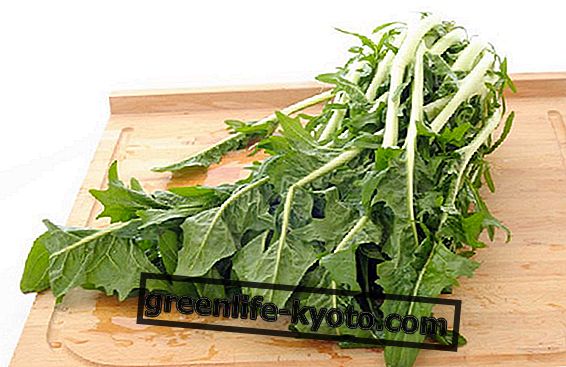
The broad bean is a plant that produces an edible legume and belongs to the legume family.
Its scientific name is Vicia faba although commonly known as the name of pods.
There are 4 different botanical varieties of beans, some for human food use, others for the forage of breeding herbivorous animals.
The broad bean is native to Asian lands but has acclimatized since ancient times to the Mediterranean climate and in Italy it has long been cultivated especially in the southern lands.
Broad bean cultivation requirements
The broad bean has no particular cultivation requirements and is among the easiest crops to follow with abundant harvests reaching 200 quintals per hectare.
The climate where it grows best is the temperate one and does not like temperatures below 5 degrees or strong drought .
Indicatively, it prefers a partially clayey soil, rich in calcium and well drained because water stagnations should be avoided; in fact irrigation is required at the time of sowing, during flowering and in cases where there are very dry periods, but in general it has no particular irrigation requirements. We should be careful not to water too much because the plant can weaken and contract fungal diseases and create the right environment for the formation of rot.
An important cultural intervention for the beans is the topping which consists in cutting the apical part of the plant when it is at least 15 centimeters high; this serves to limit the development of the green part and push the plant to a greater production of the fruits.
Broad bean cultivation: sowing
The first process for the cultivation of fava is the early preparation of at least a few weeks of sowing in direct soil . This excavation requires an average depth of 40 centimeters and a cleansing of the weeds present in the soil.
Sowing is done in 5 cm deep holes with 2 or 3 seeds per hole; the rows are spaced at least 50 centimeters from each other and on the row the holes are about 20 centimeters apart.
The sowing period can be in autumn from November onwards or in spring between March and April depending on the climate; the beans that are planted in autumn will have 6 months of production cycle while those sown in early spring will have about 3 months.
The position to sow the beans in the garden can be done following the consociation theory that sees the cultivation of the broad bean near garlic plants, onion, leeks or other plants of this type precisely because they protect one another. This affinity with the liliaceae family is one of the bases of synergistic agriculture that puts broad beans fully among the vegetables grown in synergistic gardens.
To help the sprouting of the broad bean seeds it is a good rule to soak them in water for at least one night and then plant them in the holes in the soil; this will speed up the birth of the seedlings that will sprout after about two weeks.
For the beans planted in autumn , weeding is also recommended, which consists of putting soil near the base of the plant to better protect it from the winter frost.
The sowing of broad beans in January
Collection of beans
The harvest of broad bean pods is done in spring around the month of April and continues in a scalar fashion for some time up to the month of August for the later varieties .
The pod for fresh consumption must be harvested when it is green and turgid or, with well-formed seeds in order to lose the bitter taste and become sweet with a firm consistency.
At the end of the summer the bean plants dry up completely and we can collect them for winter conservation; broad bean plants are usually eradicated a few days before they dry completely and left to dry in order to open the pods and preserve their seeds for winter storage.
Other uses of beans
The broad bean plant, being a leguminous plant, is capable of fixing nitrogen in the soil and thus enriching the soil making it more fertile; for this property, the beans are also used to increase the green organic substance, being mowed for fertilizing the soil for subsequent crops in the garden.
It is considered a true friendly plant that helps natural fertilization so much that it is one of the basic seeds of the green manure mixtures used in natural agriculture.
Le fage: how to eat them
The pods of the broad beans are edible both as a seed and as a wrapper and can be eaten either raw or cooked or they can be kept dry .
Very typical is the fresh consumption accompanied with salami or cheese or prepared dry seeds in minestrone as in the case of legume soups.
The fresh broad beans are indicated against hyperglycemia, while dried they lose this property when the sugars are concentrated in the seed, even if they remain an excellent food rich in vegetable proteins.
Let's see some recipe ideas with beans.
Broad bean sauce
Ingredients :
> Bean seeds
> one or two tablespoons of tomato sauce
> an onion
> parsley
> carrots
> aromatic herbs
Preparation : brown the onion with chopped parsley and carrots. After a few moments, add the beans and one or two tablespoons of tomato sauce.
At this point, pour plenty of water over the broad beans and cook until the beans are very soft. When cooked, add the salt and aromatic herbs such as oregano or chives or basil leaves. The beans can then be added as a sauce for dry pasta or in rice.
A variation may be to turn them into cream using an immersion blender.
Pressure cooker beans: benefits and ways of cooking
Fegripted veg with beans
From the broad bean cream we can also think of making a vip-infested:
Ingredients :
> 50% wheat flour and chickpea flour
> water,
> broad bean cream,
> salt and aromatic herbs
Preparation : mix all the ingredients, so that the dough has a fairly liquid consistency and then is cooked in a flat non-stick pan to make omelettes.
If you like them softer, you can add a pinch of yeast to make them soft.
Accompanied with diced raw tomatoes seasoned with chopped garlic and basil or with stewed seasonal vegetables, they become a true recipe for traditional country cooking.
Broad beans in oil
Even preserving the beans in oil is a good idea and the preparation is quite simple to perform.
Ingredients :
> beans
> garlic
> parsley or basil
> extra virgin olive oil
Preparation : take the broad beans and boil them in water and vinegar for at least 5 minutes, then drain them and dry them well with a cloth.
Inside well sterilized glass jars we can thus put the seared broad beans with a mixture of garlic, parsley or basil and covering the whole with extra virgin olive oil.
The jars should be beaten to allow the oil to penetrate well in any position, avoiding air bubbles that can cause rancidity and poor storage of the beans.













